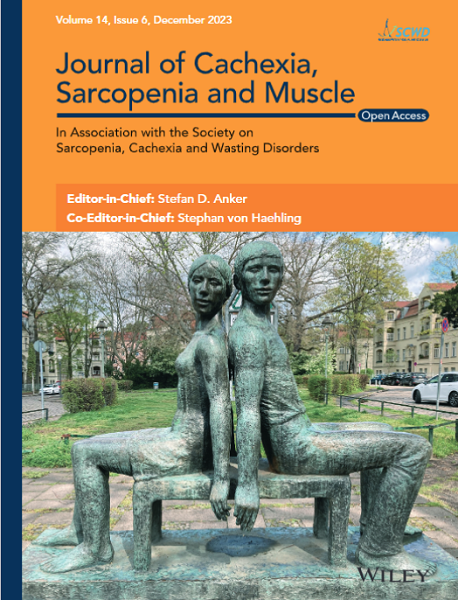The Effect of Cachexia on the Feeding Regulation of Skeletal Muscle Protein Synthesis in Tumour-Bearing Mice
Abstract
Background
Cancer promotes muscle wasting through an imbalance in the tightly regulated protein synthesis and degradation processes. An array of intracellular signalling pathways, including mTORC1 and AMPK, regulate protein synthesis, and these pathways are responsive to the muscle's microenvironment and systemic stimuli. Although feeding and fasting are established systemic regulators of muscle mTORC1 and protein synthesis, the cancer environment's impact on these responses during cachexia development is poorly understood. Although the IL-6 cytokine family has been widely investigated as a driver of cachexia with several cancers, how this signalling regulates muscle responses to feeding and fasting requires further study. We investigated if the cancer environment alters the feeding and fasting regulation of skeletal muscle protein synthesis and if the IL-6 family of cytokines signalling through muscle glycoprotein 130 could regulate this response.
Methods
Male C57BL/6J mice were subcutaneously injected with 1 × 106 LLC cells or PBS. Mice were euthanized 25–30 days post-injection after a 12-h dark cycle fast, followed by access to food pellets for 1 h (fed) or immediately sacrificed. To determine AMPK and gp13's regulation of protein synthesis and anabolic signalling, we injected tamoxifen-inducible skeletal muscle AMPKa1a2 or gp130 knockout and floxed control mice with LLC cells or PBS. The gastrocnemius muscle was analysed for protein expression.
Results
Feeding increased p-rpS6 and protein synthesis in PBS (2.2- and 0.4-fold, p < 0.001) and LLC mice (1.7- and 0.9-fold, p < 0.001), but overall, LLC significantly reduced p-rpS6 and protein synthesis. Feeding only increased p-AKT in PBS mice (1.5-fold, p < 0.001). In vitro LLC-conditioned media did not inhibit the insulin induction of myotube p-AKT (p < 0.001) and p-rpS6 (p < 0.001). Muscle gp130 loss reduced the fasting p-AMPK induction in LLC mice but did not alter suppression of p-AKT and p-rpS6 and protein synthesis. Muscle AMPK loss increased p-rpS6 (2.1-fold, p < 0.001) and protein synthesis (0.7-fold, p < 0.001) in PBS mice but did not restore LLC-suppressed protein synthesis.
Conclusions
Our study provides novel insight into muscle responsiveness to feeding and fasting in a cancer environment. We find the acute anabolic response to feeding is maintained during LLC-induced cachexia, whereas the fasting catabolic response is exacerbated. Muscle-specific gp130 loss prevented disrupted fasting AMPK activation but not protein synthesis. There is a need to understand the aberrant upstream and downstream regulation of muscle AMPK activity that is disrupted with cancer and leads to aberrant protein turnover regulation.


 求助内容:
求助内容: 应助结果提醒方式:
应助结果提醒方式:


